1956 Ariel Square Four
1956 ARIEL SQUARE FOUR – NEW & IMPROVED
The Square Four went through a major revision in 1953, with a new cylinder head and manifolds, prompting a new sub-model designation, Mark II, which ran from 1953 through Ariel’s final year, 1959. Prior to 1953, both cylinders on each side shared just one exhaust pipe, hence the nickname “2-pipes”. But new intake and exhaust manifolds and the new head gave each cylinder it’s own exhaust pipe, hence the term “4-pipe” bikes. This 1956 Ariel Square Four of course benefitted from these improvements, which yielded a bump in power to 40 horsepower, allowing a top speed of 100 mph.
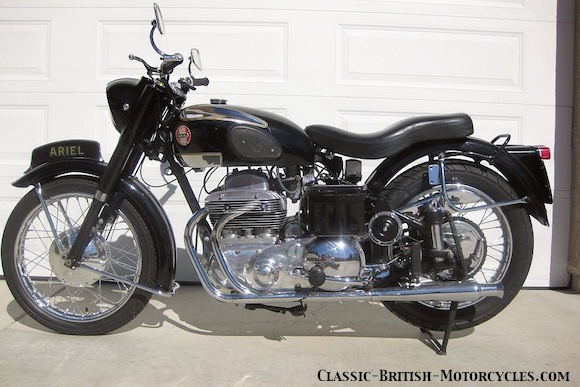
1956 ARIEL SQUARE FOUR – NOT A HOT ROD
Of course, the Ariel Square Four was never intended to be a road rocket. With two counter-rotating crankshafts, it was meant to be very smooth. These bikes are cruisers, designed to pull a side car or cruise at speed all day long. There weren’t many bike in the 1950s that you could say that about. Ariel had more or less committed itself to this “cruiser”-image, having plumbed in a common intake manifold that fed all four cylinders from a single carburetor, by now an automotive type SU carb.
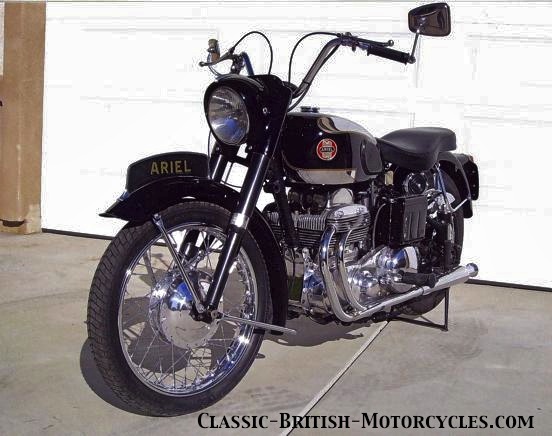
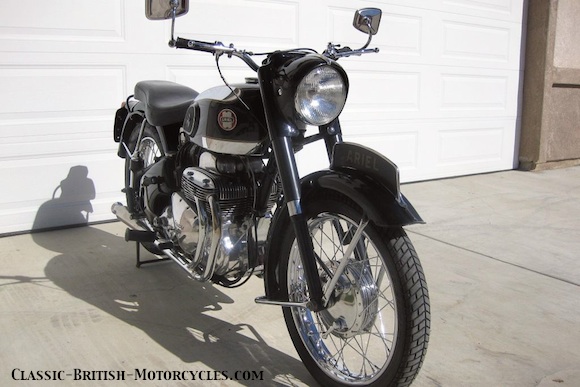
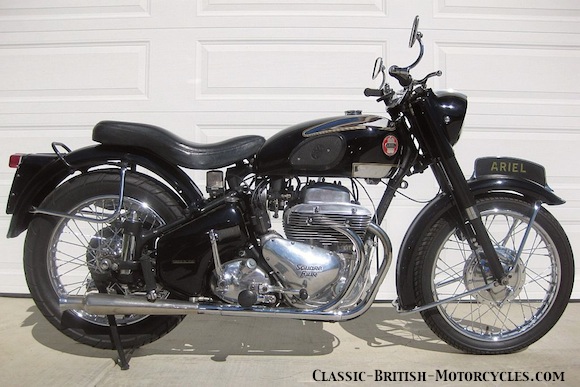
1956 ARIEL SQUARE FOUR PRODUCTION
Like so many legendary British motorcycle manufacturers of the classic era, Ariel was a fairly low-volume operation. Like most of their contemporaries, they were practically hand-crafting these bikes one at a time in very old factories, using ancient machinery and techniques. It was the British way back then. Once they fixed onto a given technique or design, they stuck with it forever, just making incremental improvements as they went. As the result, only 3,828 Mark II’s were built total between 1953 and 1959. That’s only about 547 bikes per year, on average. No wonder they went out of business in 1959. Pity though. Ariel also built a series of very successful single-cylinder bikes, the Ariel Red Hunter-series in 350cc and 500cc.
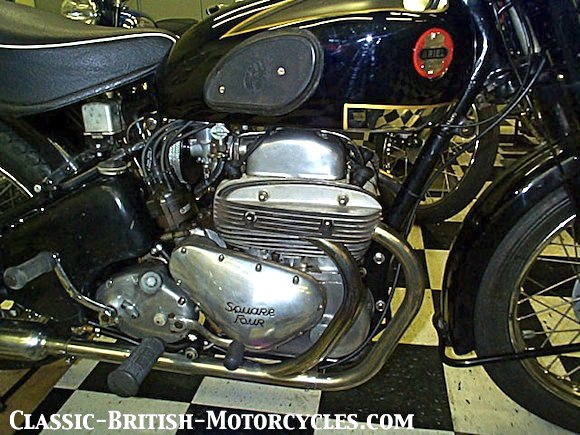
1956 Ariel Square Four SPECIFICATIONS
|
Engine type Displacement Bore & Stroke Compression Carburetor Engine output Ignition Charging Battery Primary drive Clutch Gearbox Ratios, overall: 1st, bottom 2nd 3rd 4th, top Final drive Frame type Suspension, front Suspension, rear Brake, front Brake, rear Wheel, font Wheel, rear Tire, front Tire, rear Fuel capacity Wheelbase Seat height Ground clearance Dry weight |
Air-cooled OHV twin-crankshaft 4-cylinder 997cc 65mm X 75mm 7.2:1 1- SU side-draft w/variable choke 42 bhp @ 5800 rpm Lucas coils & distributor Lucas 70W dynamo 6 volt, 20 amp-hours 1/2″ X .305″ chain Multi-plate, dry 4-speed constant-mesh, right foot shift — 11.55:1 7.4:1 5.7:1 4.36:1 5/8″ X 3/8″ chain Steel tube, full-cradle Ariel telescopic fork, hydraulic damping 2- plunger-type w/short trailing arm 7″ full-width SLS drum 8″ SLS drum WM2-19 (19″) WM3-18 (18″) 3.25″ X 19″ Dunlop, ribbed 4.00″ X 18″ Dunlop, universal 5 gal 56.0″ 31.0″, unladen 5.5″, unladen 435 lbs |


